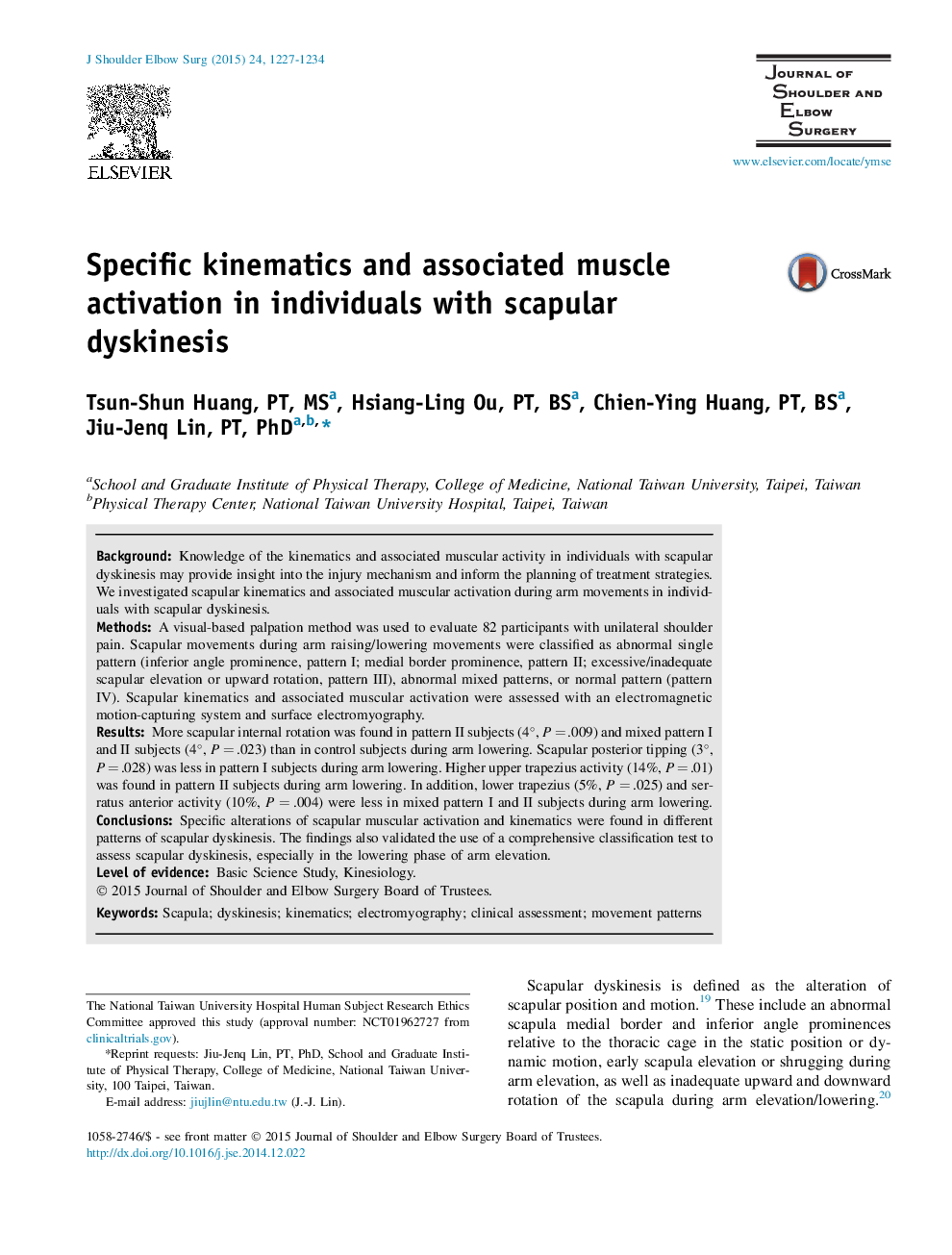| Article ID | Journal | Published Year | Pages | File Type |
|---|---|---|---|---|
| 6210899 | Journal of Shoulder and Elbow Surgery | 2015 | 8 Pages |
BackgroundKnowledge of the kinematics and associated muscular activity in individuals with scapular dyskinesis may provide insight into the injury mechanism and inform the planning of treatment strategies. We investigated scapular kinematics and associated muscular activation during arm movements in individuals with scapular dyskinesis.MethodsA visual-based palpation method was used to evaluate 82 participants with unilateral shoulder pain. Scapular movements during arm raising/lowering movements were classified as abnormal single pattern (inferior angle prominence, pattern I; medial border prominence, pattern II; excessive/inadequate scapular elevation or upward rotation, pattern III), abnormal mixed patterns, or normal pattern (pattern IV). Scapular kinematics and associated muscular activation were assessed with an electromagnetic motion-capturing system and surface electromyography.ResultsMore scapular internal rotation was found in pattern II subjects (4°, P = .009) and mixed pattern I and II subjects (4°, P = .023) than in control subjects during arm lowering. Scapular posterior tipping (3°, P = .028) was less in pattern I subjects during arm lowering. Higher upper trapezius activity (14%, P = .01) was found in pattern II subjects during arm lowering. In addition, lower trapezius (5%, P = .025) and serratus anterior activity (10%, P = .004) were less in mixed pattern I and II subjects during arm lowering.ConclusionsSpecific alterations of scapular muscular activation and kinematics were found in different patterns of scapular dyskinesis. The findings also validated the use of a comprehensive classification test to assess scapular dyskinesis, especially in the lowering phase of arm elevation.
